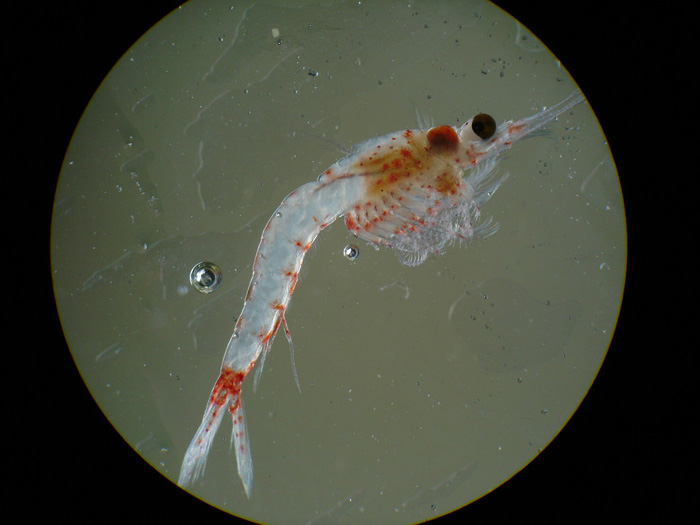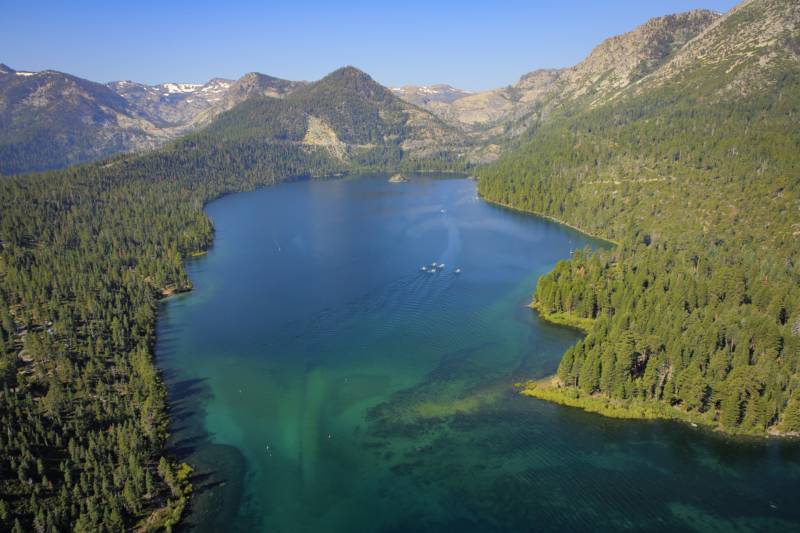Removing a species of tiny shrimp may be the key to returning Lake Tahoe’s waters to the clear cerulean shade extolled in vacation guides.
According to the latest State of the Lake report from UC Davis scientists, the approach could restore Tahoe to what Mark Twain called “the fairest picture the whole world affords.” Halfway through a two-year pilot project, the team is even hopeful that it will preserve the lake’s clarity in a warming climate.
Researchers announced in May that clarity had improved “dramatically” in 2018 to 70.9 feet, a 10.5-feet increase over 2017, due to “better weather and streamflow conditions.” But the report notes this level “is still far short” of the 97.4-feet clarity-restoration target.
Beauty Meets Biology
The shrimp, Mysis relicta, haven’t always resided in Lake Tahoe. The invasive species was first introduced by the California Department of Fish and Wildlife in the 1960s in an effort to feed the local trout population, a move that quickly spiraled out of control. In the clear waters of Lake Tahoe, Mysis flourished and ate most of the lake’s zooplankton, but the average trout size decreased. Billions of shrimp now live in the lake, but it wasn’t until recently that the scientists established the link between Mysis and the lake’s cloudy waters in summer.

They first had to think smaller — much smaller. Cyclotella are drum-shaped single-celled algae, 20 times smaller than the width of a human hair, with opalescent glassy skeletons that scatter light. Due to their small size, Cyclotella also float in the upper levels of the lake, reducing the sunlight that reaches organisms on the lake floor, clouding and reducing oxygen levels in the water.
Tahoe’s native zooplankton eat these diatoms and remove them from the water, excreting them in larger clumps. One year, when the shrimp, which feed on zooplankton, were absent from the lake during a natural fluctuation in population, the zooplankton populations expanded. The water’s clarity increased dramatically, nearly doubling in 18 months.
The scientists wondered if they could engineer this clarity by removing the shrimp themselves. They tested the approach in Emerald Bay, a cove in the lake, by tracking the shrimp with sonar and removing them with large cone-shaped nets. The result? There’s still a year left in the pilot project, but waters are clearer.
Clarity in a Changing Climate
This new strategy might come just in time. According to the report, which surveys the general state of the lake every year, summer clarity has been declining in Lake Tahoe, and will continue to worsen as temperatures and waters warm, mixing and oxygenation decrease, and runoff from streams occurs earlier in the year. (The worst clarity on record occurred just last year.)
Other parts of the Tahoe Basin are threatened by climate change, too. Last year’s surface water temperature was the second warmest since 1968, when scientists began taking regular measurements. Scientists project that air temperatures in the Tahoe Basin will rise by nine degrees by the end of the century, which would heighten wildfire risk and affect when fish spawn, among other changes.
But because removing Mysis allows zooplankton to flourish, and zooplankton help remove Cyclotella from lakewater, scientists think their approach may not only “restore clarity to levels not seen in decades,” as a Davis press release speculated, but might also be a long-term solution to the health of the lake as an ecosystem.
Although scaling up these efforts for the entire lake would be expensive, Brant Allen, who directed the Emerald Bay study for the Tahoe Environmental Research Center, said that they wouldn’t exceed the $2 billion already spent on general restoration efforts in the region.
“[Tahoe] is known for its water clarity, and it is spectacular,” says Allen. “Preserving that and trying to return it to what it was before we built up the Tahoe Basin seems like a worthy goal.”

